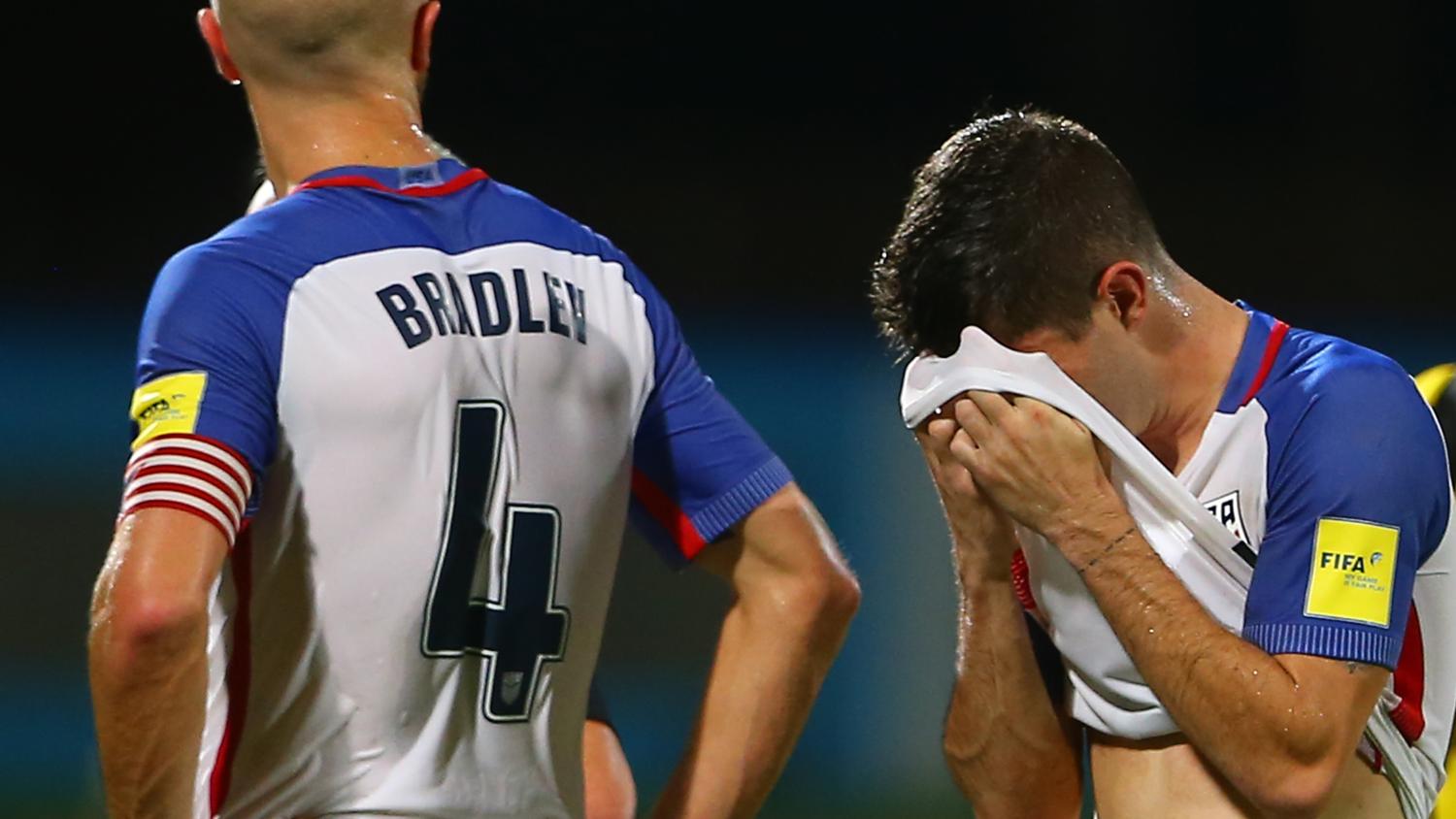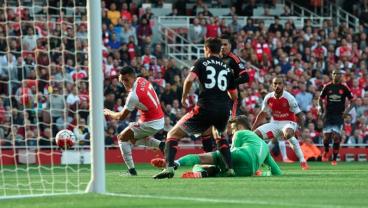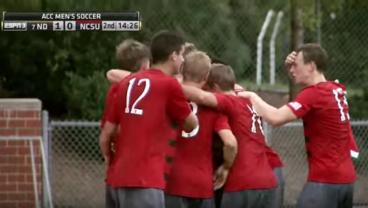One year ago, the U.S. men’s national team traveled to Cuova in Trinidad and Tobago on the final day of Concacaf World Cup qualifying. All the USMNT needed was a win or draw or at the very least have Mexico or Costa Rica get a win to keep its World Cup hopes alive.
None of it happened, and it was the darkest day in the history of the USMNT.
The U.S. will play Colombia in Florida on Thursday, 366 days after the calamity in Cuova. A year later, what, if anything, has changed with the U.S. men’s national team?
Not much.
Three days after the U.S. loss to Trinidad and Tobago, on Friday the 13th, Bruce Arena resigned as USMNT coach. It was an obvious conclusion after becoming the first coach to fail to lead the U.S. to a World Cup since Alkis Panagoulias in 1986. To be honest, we’re a bit surprised he was allowed to resign instead of fired on the plane back to the states, but given his contributions to the game maybe he was given time to make the decision on his own.
Later that day, Sunil Gulati, then the U.S. Soccer president, said he would not step down. As we quoted then:
“I take full responsibility,” Gulati said of missing the World Cup, before adding in the same breath: “No, I don’t plan to resign and it’s not the right day to talk about my personal future plans in terms of the federation’s presidency.”
Gulati eventually (nearly two months later) relented to massive pressure and calls to resign by opting not to run for reelection. Again, it was an obvious decision, one that had to be made, though it probably should’ve been made earlier. Whether or not Gulati was the problem, he was a major part of catastrophic failure and new ideas were needed. Not that we’d necessary get that.
Both before and after Gulati’s decision to not run for reelection, a large number of candidates began campaigning for the job of U.S. Soccer president. Some were well qualified — others, not so much. Former U.S. players Kyle Martino, Eric Wynalda, Paul Caligiuri and Hope Solo put their names in the running as did more administrative officials such as Kathy Carter, Steve Gans, Mike Winograd and Carlos Cordeiro, then the vice president. There was also Paul Lapointe, essentially the Donald Trump of the campaign, who never really had a chance (because there was no electoral college).
In the end, we got more of the same as Cordeiro was elected U.S. Soccer president, edging out Carter, another establishment choice (more so than Cordeiro, it should be said).
While U.S. Soccer got a new president, other changes that might actually affect the USMNT were also made — though most would argue not enough.
One of the changes U.S. Soccer tried to trot out was the introduction of bio-banding, an initiative seeking to group youth soccer players together not by their chronological age but by their biological age, as in their physical maturity. It seems like a decent enough idea in some cases, but by no means a panacea.
Perhaps the biggest change was the creation of a general manager position for both the men’s and women’s national teams. Earnie Stewart was named to the position in June, tasked with finding a new USMNT coach. But, we’re in October already and there is still no word on who the next USMNT coach might be.
While Stewart should be given time to find the right coach — there isn’t a huge rush as the next meaningful matches aren’t until the Gold Cup in 2019 — it’s wild to think the U.S. has kept the interim tag on Dave Sarachan for nearly a full year now.
Unfortunately, not having a coach means the U.S. is lacking direction and focus. And, perhaps most crucially, lacking a face for the program to recruit dual-nationals — or keep dual-nationals from defecting.
One of the most frustrating fallouts from the World Cup qualifying failure was the loss of players like Jonathan Gonzalez, who chose to switch allegiances to Mexico. Gonzalez, a California native who represented the U.S. at the U-17, U-18 and U-20 levels, was granted a one-time switch by FIFA and became symbolic of U.S. Soccer’s failure in Latino communities.
Despite losing out on talented players like Gonzalez and Efrain Alvarez, the U.S. has plowed forward with a massive infusion of youth in the side. Youngsters like Christian Pulisic, Tyler Adams, Weston McKennie, Cameron Carter-Vickers, Timothy Weah and Josh Sargent — all 20 or younger — have all been given plenty of time with the USMNT under Sarachan as U.S. Soccer looks to the future.
Which brings us to the year anniversary of the Trinidad and Tobago loss. While the U.S. women will actually play Trinidad and Tobago in women’s World Cup qualifying on the anniversary, the men are preparing to play Colombia in a friendly. The most shocking part of the roster for the match against Los Cafeteros (and the following match against Peru on Tuesday) is the inclusion of Michael Bradley.
Bradley was the captain of the USMNT on that fateful day in Cuova. He came to epitomize the failure of the team. He was subjected to jeering from fans across the country when he returned to his MLS club.
And now he’s back.
On Monday, Bradley sounded like a man trying to convince himself he’s still a major part of the national team setup.
"I think there's a number of young guys who over this last stretch have done well and who have shown that going forward they need to be a big part of things as we start to try to put a team together that can move into a Gold Cup next summer and start to move into meaningful competitive games," Bradley said. "It's important the balance in the group is right and this is another step in that process."
The return of Bradley to the USMNT setup a year after the failed World Cup qualifying campaign now symbolizes how little U.S. Soccer has grown and learned in the ensuing 365 days. We saw France win the World Cup with one of the youngest (and most diverse) sides in the tournament; we saw Germany crash out by trying to do the same thing it did four years prior.
International soccer right now is a young man’s game that demands constant tweaking, improvements and attention to detail. Despite attempts to move in this direction, the U.S. is still mired in its old approach. While Bradley is maligned much more than he deserves — you’d be hard pressed to find a better U.S. midfielder over the past decade — his return to the lineup is a reminder of the old wound, one we’ve failed to heal in the past year.
On the anniversary of the worst day in the history of USMNT, perhaps the most heartbreaking part of the World Cup failure is that U.S. Soccer has yet to truly right the ship in any meaningful way.





